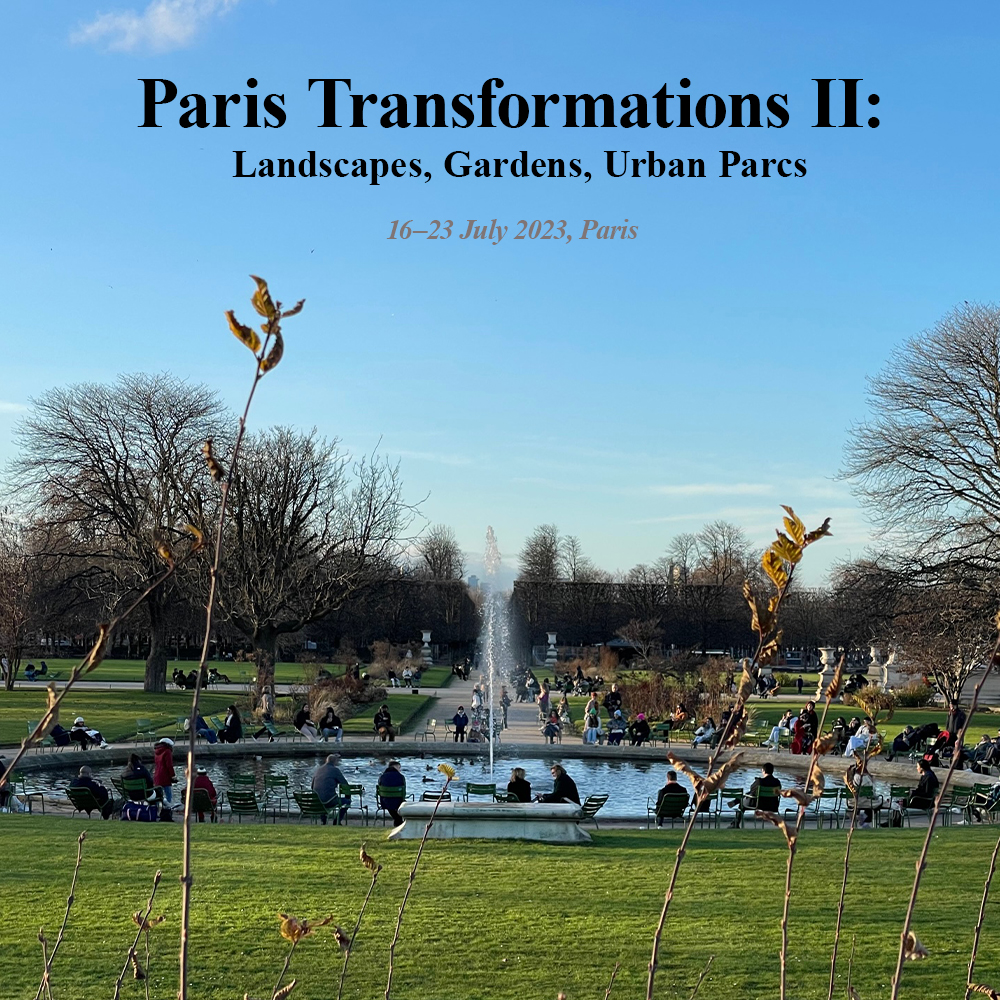
|
|
|
General Information > PresentationNature has played a central role whenever urban transformation has been attempted in the city of Paris, over the centuries and up to the present day. Landscape architecture according to French approaches, with its strong philosophical background and original construction techniques (e.g. Buttes Chaumont, Parc de Montsouris), occupies a leading position internationally not only in the planning of the city but also in the dialogue it engages with politics and power, often in a spirit of strengthening it. After the French Revolution, the use of citizens’ leisure time became a public good in French political thinking and the importance of the social role of public green spaces was confirmed. Throughout the 19th century and the first half of the 20th century, Paris developed a network of gardens that played an essential role in the planning of the city. Large parks were created and large-scale gardens structured the major works implemented. The search for exoticism led to the creation of thematic gardens inspired by other contexts (English, Japanese, Arab, etc.). More recently, landscape architecture has allowed the expression of the city’s multiculturalism through the presence of gardens from different traditions. In turn, urban parks, gardens, and squares have been considered as “theatres of the monarchy”, green lungs for hygiene, privileged grounds for the development of dialogue between public space and the arts, but above all as spaces inextricably linked to the life of citizens and the improvement of their daily life, which is confirmed by their continuing popularity. Paris is currently experiencing a new period of major transformations and unprecedented developments in the field of architecture and the city, with climate change at the heart of the concerns of local decision-makers and citizens. The role of green spaces and nature is becoming paramount and is a central element in the making of the city. The presence of nature is sought in every intervention in the city, at all scales, from large parks to vertical gardens on walls and roofs. At the same time, the great tradition of French horticulture is evolving, giving rise to interesting results in landscape architecture and contemporary ways of integrating public green spaces into everyday life (urban gardens, etc.). The question of urban agriculture is also essential, with the creation of urban farms at the gates of the city, often coupled with artistic initiatives, as in the case of Zone Sensible, an urban farm in Saint-Denis. It is precisely these architectural and urban transformations, related to the conception of gardens and green spaces, that will be the subject of the Summer School PARIS - TRANSFORMATIONS II: PAYSAGE, JARDINS, PARCS URBAINS. The 2023 summer school is a continuation of the school held in 2022 entitled PARIS -TRANFORMATIONS I: ARCHITECTURAL, URBAN, METROPOLITAN. The 2023 Summer School will also be attended by key figures (landscape architects, horticulturists, agronomists, artists, social scientists, and researchers as well as local actors). It will be composed of lectures, in situ interventions and visits. For example, the school will include lectures and/or visits to royal gardens (Jardin du Luxembourg) or medicinal gardens created in the 17th century (Jardin des Plantes), gardens that are part of large urban compositions of the 18th century, gardens integrated into architectural programs (gardens of the Rodin Museum) throughout the history of Paris, gardens, parks, and Haussmann cemeteries of the 19th century (Bois de Boulogne, Parc Monceau, Parc des Buttes Chaumont, Parc Montsouris, Cimetière du Père Lachaise). It will focus on modern parks and gardens (Parc de la Villette, Grand Parc de SaintOuen, gardens of the Musée du Quai Branly, Jardin de Bercy, Parc André Citroën, park around the Halle Fressinet Paris Rive Gauche, PromenadePlantée, Berges de la Seine, Halle Pajol, Petite ceinture de Paris). He will also discuss gardens of regional inspiration (the Arab garden of the Paris Mosque, and the garden of the Albert Kahn Museum). The relationship between landscape painting and landscape design will also be explored. Visits will be devoted to smaller-scale green interventions in the city, such as the recent “pocket gardens” or “urban oases” that are particularly relevant to the city of Paris, and studies will be presented on the transformation of the city with the inclusion of large greenspaces (e.g., the landscaping of Notre-Dame, the pedestrianization of the Champs-Élysées, etc.) that contributes to the creation of an image of a “green city”, a stated political choice of the City of Paris. The 2023 Summer School will take place at the HellenicFoundation, which is located in the park of the Cité Internationale Universitaire de Paris, a 34-hectare landscaped park created at the beginning of the 20th century, a veritable green lung for the south of Paris, with more than 400 different plant species. |

